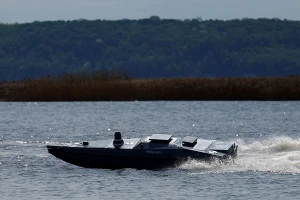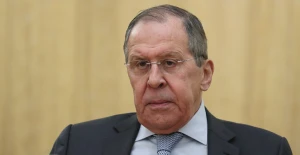
Ukrainian counteroffensive: achievements and setbacks in summer-autumn campaign
Six months ago, in early June, Ukraine initiated a counteroffensive that raised high expectations both domestically and in the West. This article aims to assess the results, examine why Russian forces remain in southern Ukraine, and explore future expectations
Espreso delves into these crucial aspects.
Key points covered:
- The anticipated outcomes of the Ukrainian counteroffensive.
- A timeline of the campaign's initiation and progression.
- Evaluation of the results from the summer-autumn campaign.
- Insights into the potential impact on the ongoing war's trajectory.
Counteroffensive goals: Military-political objectives
Following the swift counteroffensive in the Kharkiv region and the liberation of Kherson in the fall of 2022, a new phase commenced in the Russian-Ukrainian war. Russia executed an extensive mobilization, with the Ukrainian GUR reporting about 350,000 individuals mobilized in the fall of 2022 alone. Missile attacks were launched on the Ukrainian energy system, and preparations for a winter offensive in Donbas were underway.
Ukraine and its Western allies, in response, outlined their action plan for 2023. President Zelenskyy embarked on trips to Washington and European capitals, securing public commitments of ongoing support for Ukraine. In December 2022, The Economist published an interview with General Valerii Zaluzhnyi, the Commander-in-Chief of the Armed Forces, where he appealed to the West for modern tanks, armored personnel carriers, infantry fighting vehicles, and ammunition.
"I know that I can beat this enemy. But I need resources. I need 300 tanks, 600-700 IFVs, 500 Howitzers. Then, I think it is completely realistic to get to the lines of February 23rd," stated Zaluzhnyi in the interview.
Right from the start, it's crucial to mention that Ukraine didn't receive such a large quantity of weapons last year. However, the West has initiated the supply of modern armored vehicles, a departure from the previous practice of searching for Soviet remnants worldwide, assuming that the Armed Forces could immediately use them without training delays.
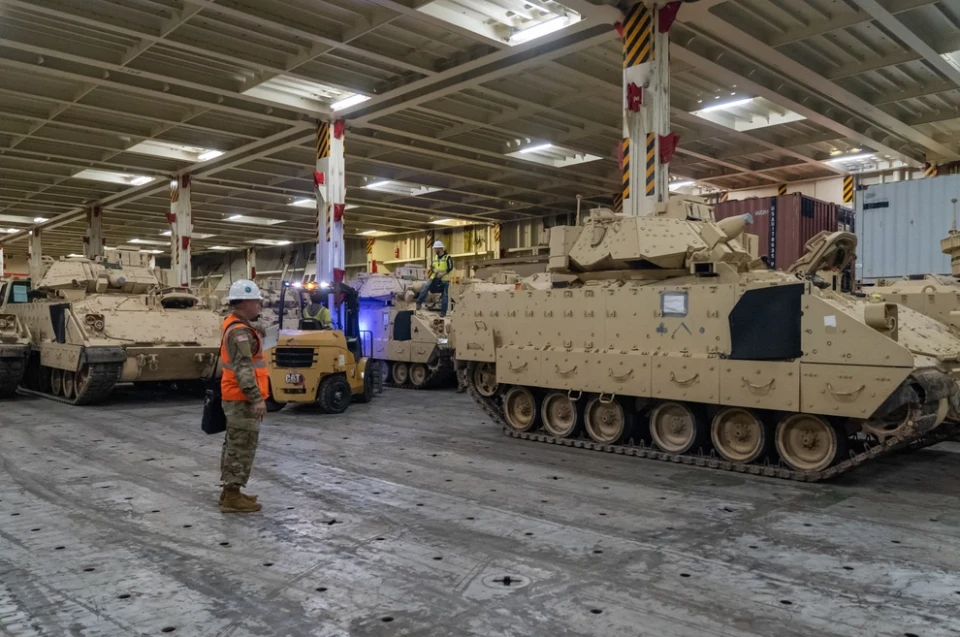
American servicemen are preparing the Bradley infantry fighting vehicle to be sent to Ukraine;
Photo: Oz Suguitan
Towards the end of 2022, some government representatives started hinting at an upcoming counteroffensive. For instance, Mykhailo Podolyak, an adviser to the head of the President's Office, pledged to speak about "free Crimea" on the Yalta embankment during the nationwide telethon "Yedyni Novyny" in six months. Similarly, Kyrylo Budanov, the head of the Main Directorate of Intelligence of the Ministry of Defense, expressed optimism. In a 2023 interview with ABC News, he disclosed Ukraine's preparation for a "main blow" in the spring.
"This is [when we will see more] liberation of territories and dealing the final defeats to the Russian Federation," he said. "This will happen throughout Ukraine, from Crimea to the Donbas."
Military experts initially predicted that the primary strike would occur in the South, specifically in the Zaporizhzhia region. The main objective of the counteroffensive would be to establish fire control over the land corridor to Crimea, if not direct access to the administrative border with the occupied peninsula. General Zaluzhnyi emphasized this point, stating, "To reach Crimea's borders, covering 84 kilometers to Melitopol is sufficient. This would grant us full fire control over the land corridor, enabling shelling of the Crimean Isthmus."
This viewpoint was supported by The Washington Post in June. The publication reported that during CIA Director William Burns' visit to Kyiv, Ukrainian officials informed him that the counteroffensive's aim was to approach the administrative border with Crimea and then compel Russian President Vladimir Putin into meaningful negotiations.
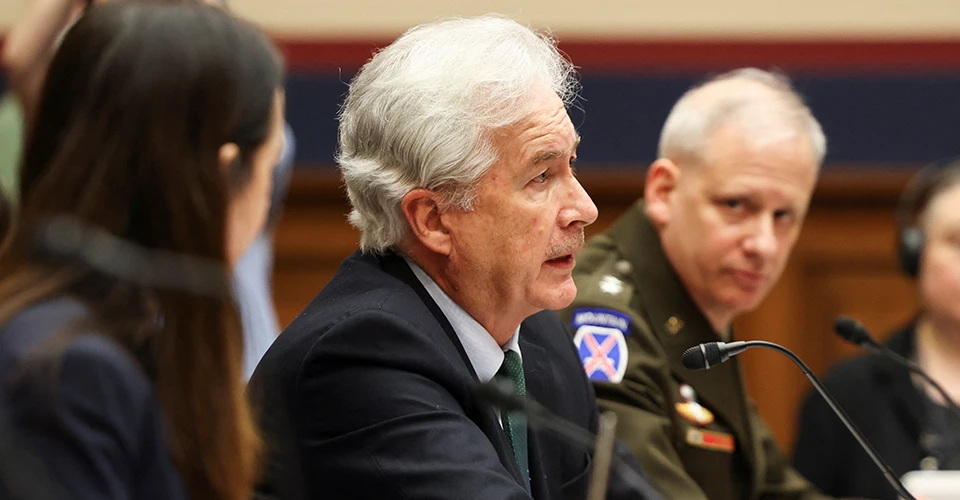
Director of the CIA William Burns, Photo: Reuters
In an ABC News interview, Volodymyr Zelenskyy didn't deny the information: "Well, it is absolutely clear, logical rhetoric that at that moment when Ukraine will reach the administrative border with a temporarily occupied Ukrainian peninsula, Crimea, it's very likely that Putin will be forced to seek dialogue with the civilized world, unlike how it was before the full-scale invasion, because he will be weakened."
High-profile statements from political and military leaders fueled expectations in society. Many Ukrainians linked the counteroffensive to the final victory and the end of the hot phase of the war. These hopes persisted despite alarming reports in the Western media during the spring, coinciding with a significant leak of Pentagon documents. These reports discussed delays in Western weapon supplies, inadequate training for new armed forces brigades, and American intelligence doubting that the counteroffensive would meet expectations.
President Zelenskyy finally acknowledged that expectations for the counteroffensive were exaggerated a month before its start. In a BBC interview, he urged a realistic perspective. He said that we can't be certain this counteroffensive will fully restore Ukraine's sovereignty. The goal is to advance, prevent conflict freezing, and avoid a repeat of the Minsk agreements.
Ukrainian counteroffensive timeline
The Ukrainian counteroffensive kicked off on Sunday, June 4. The primary push occurred in the Zaporizhzhia region, just south of Mala Tokmachka, involving units from the 33rd and 47th brigades. Unfortunately, this attempt faced major setbacks, resulting in significant losses, particularly in Western armored vehicles. The main hurdle was extensive minefields, which the Armed Forces struggled to navigate or clear due to their size and lack of suitable equipment. Russia took advantage of its air superiority, using Ka-52 helicopters to destroy Ukrainian tanks and armored personnel carriers. Additionally, the enemy deployed Lancet drones actively.
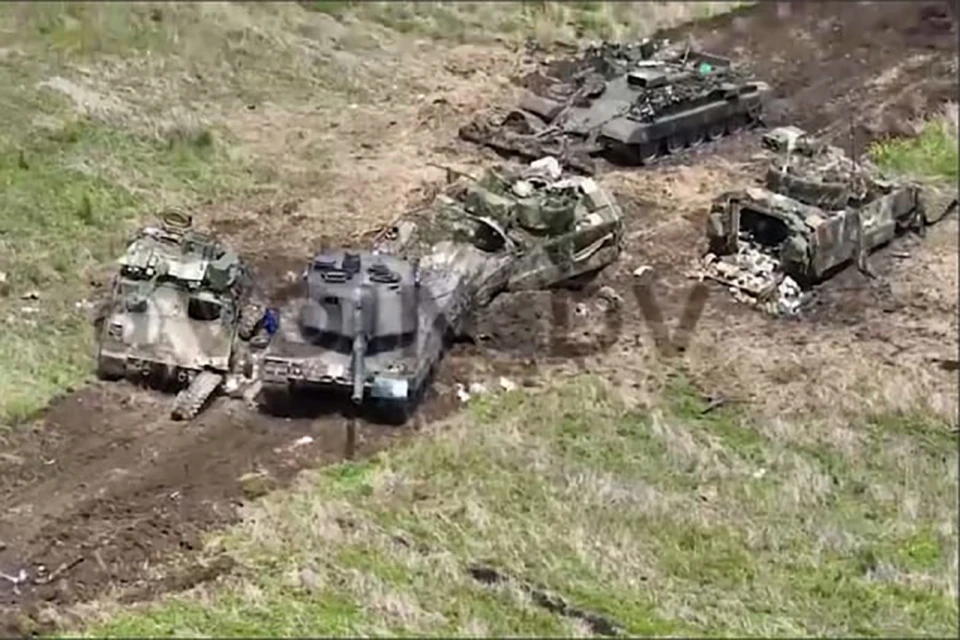
Photo: social media
According to a recent article in The Washington Post, based on interviews with numerous Ukrainian servicemen, and high-ranking Ukrainian and Western officials, the armed forces suffered losses in the early days of the operation, including 20 Bradley fighting vehicles and six Leopard 2 tanks. On the fourth day, General Zaluzhnyi opted to shift tactics, abandoning the idea of a swift breakthrough. A positional standoff ensued, focusing on counter-battery combat. The ZSU continued advancing in small groups of 10 infantry, prioritizing the preservation of lives and equipment. Over the next six months of the counteroffensive, the Armed Forces managed to advance approximately 20 km, liberating several villages.
In June, the Defense Forces took control of the Vremiivsky ledge, freeing Neskuchne, Storozheve, and Blahodatne. By the end of July, they pushed the Russian army out of Staromayorske, a crucial point for the Russian army's defense. However, reaching Staromlynivka proved challenging, hindering potential offensives towards Mariupol and Berdyansk for the Armed Forces.
In the Tokmak direction, significant progress was made in weakening Russian troop positions around Robotyne and Verbove. Unfortunately, the Armed Forces couldn't reach Tokmak itself, a key location to disrupt road and rail routes to Crimea. Despite being approximately 20 kilometers away from Tokmak, obstacles like substantial Russian forces, extensive minefields, and fortified structures impede progress.
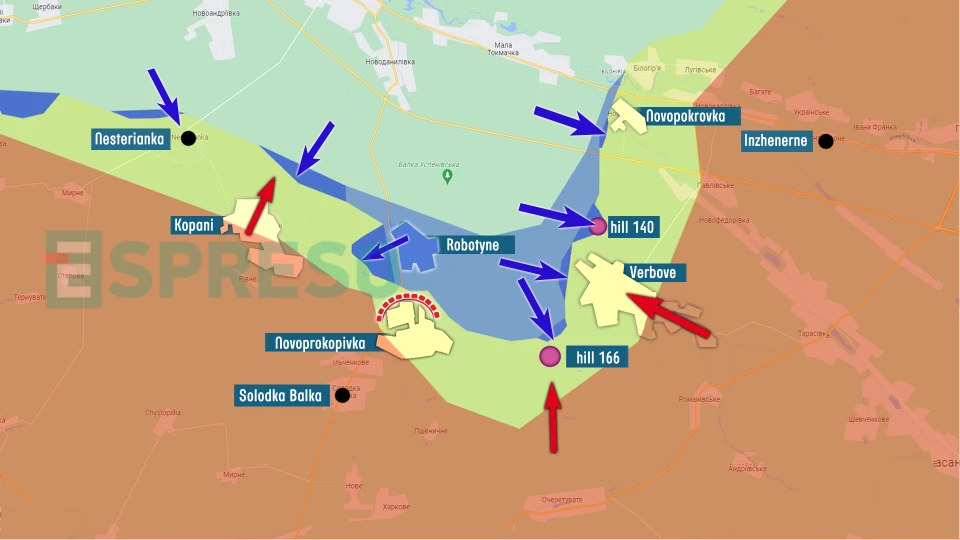
In summary, if the primary objective of the counteroffensive was to control land routes to the occupied peninsula, this goal hasn't been achieved.
Considering the campaign's outcome in terms of liberated territories, The New York Times' map in late September provides a clear picture. Areas seized by the aggressor are marked in red (532 sq. km, mainly in Bakhmut district), while territories reclaimed by the Armed Forces are in blue (302 sq km).
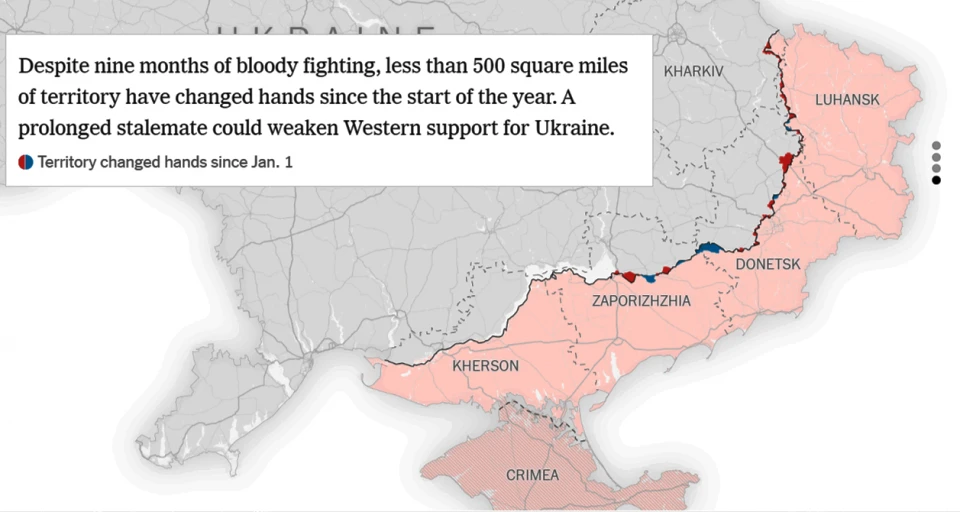
Photo: The New York Times
On November 1, The Economist, a British magazine, featured an article and interview with Valerii Zaluzhnyi. The general remarked, “Just like in the first world war we have reached the level of technology that puts us into a stalemate...There will most likely be no deep and beautiful breakthrough." Zaluzhnyi urged readiness for a new phase of the war.
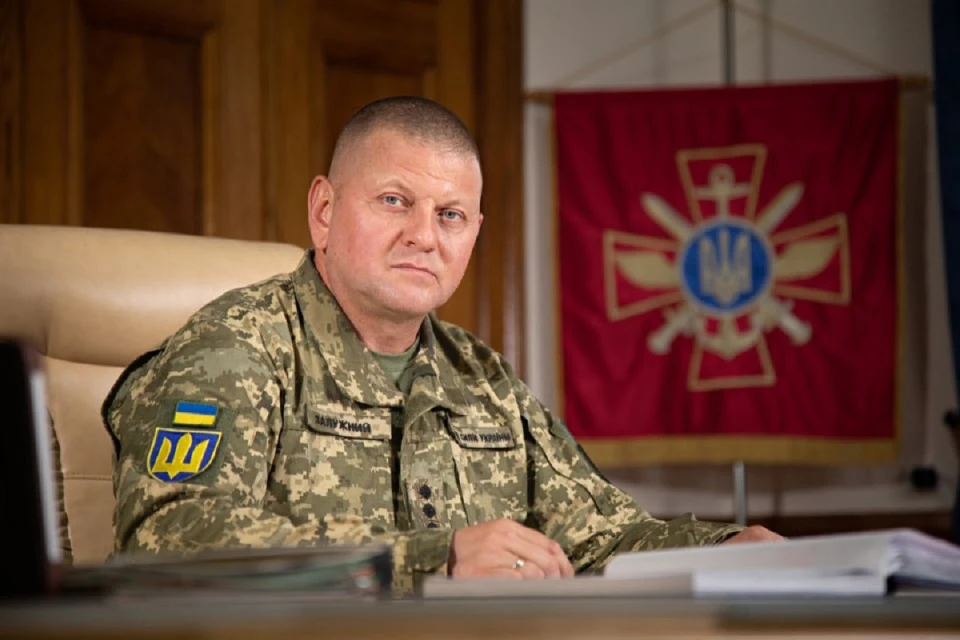
Commander-in-Chief of the Armed Forces of Ukraine Valerii Zaluzhnyi,
Photo: zsu.gov.ua
A month later, President Zelenskyi acknowledged that the counteroffensive fell short of expectations.
"We wanted faster results. From that perspective, unfortunately, we did not achieve the desired results. And this is a fact," stated the head of state in an interview with AP.
Reasons for setbacks
Various factors are pointed out by Western and Ukrainian military observers as contributing to Ukraine's failure to meet its objectives. These factors, both objective and subjective, can be summarized as follows:
- Ukraine lacked the necessary weaponry for a large-scale operation, with a notable shortage of combat aircraft, air defense equipment, and long-range missiles. Retired General Ben Hodges, former commander of the US Army in Europe, contends that the aid provided by the US was only sufficient for Ukraine's "survival."
"We would never send American soldiers to do that attack without having already achieved total air superiority and having provided an immense amount of breaching engineering equipment and so on," stated General Hodges.
A critical issue was the scarcity of ammunition. The EU fell short of delivering the promised million artillery shells, having supplied only 300,000. Notably, South Korea reportedly indirectly provided more ammunition to Ukraine than all European countries combined. Meanwhile, Russian President Putin, as per South Korean intelligence, secured a million ammunition from the DPRK. Only in July, when Ukraine faced an artillery shell shortage, did the US commence the supply of cluster munitions. Although this revived the offensive, it fell short of achieving the anticipated breakthrough.
- One issue is the delayed assistance. According to reports from the American press, the Pentagon suggested starting the counteroffensive as early as April. However, Ukrainian leaders complained about the tardy arrival of equipment, often unfit for combat. Had the operational Leopards and Bradleys been on the battlefield in fall 2022 or early 2023, the situation might have been different. Instead, after significant setbacks last fall, the Russians had months to fortify and heavily mine the Ukrainian South, thanks to the delayed arrival. The so-called and previously mocked "Surovikin line" actually held back the Ukrainian counteroffensive.
- "The Bakhmut Factor" sparks a continuous debate in military circles, questioning whether Ukraine's Armed Forces wisely allocated resources, including ammunition, for defending the city during the winter-spring of 2023. Some argue that a strategic withdrawal to more favorable positions, like Chasiv Yar, might have been more prudent. Additionally, doubts linger about the justification behind the summer-autumn counteroffensive in the Bakhmut area. The New York Times reported a pivotal video conference on August 10, involving top military officials like Chairman of the Joint Chiefs of Staff Mark Milley, Britain's Tony Radakin, and Christopher Cavoli, the commander of US forces in Europe. They urged Ukraine's Armed Forces head, Valerii Zaluzhnyi, to shift focus southward, relocating the most potent units away from Bakhmut. Despite this counsel, Ukrainian forces persisted in holding a substantial presence in the Bakhmut region, surpassing the group attempting a breakthrough in the south. The Ukrainian command's rationale became clearer in light of the challenging but effective defense earlier in the year, essentially neutralizing the formidable Wagner PMC. This Russian unit, severely weakened by significant losses, lost its combat effectiveness. The subsequent counteroffensive in the city's vicinity during the summer-autumn of 2023 not only safeguarded the Ukrainian-controlled part of Donetsk but also compelled the Russians to maintain a substantial defensive presence near Bakhmut. Military expert Serhiy Zgurets, in an Espreso commentary, emphasized that transferring a large troop contingent from Bakhmut to the south didn't guarantee a breakthrough but introduced risks in the east. The command's logic centered on maintaining control along the entire front line, with the potential weakening near Bakhmut posing serious threats, including those to the Slovyansk-Kramatorsk agglomeration.
- A notable problem is the insufficient training in the Armed Forces. In March, The Washington Post published a critical piece on the training system for Ukrainian army recruits. Lieutenant Colonel Anatoliy Kozel, also known as "Kupol," who led a landing battalion, criticized it, stating, "It's either a massacre with corpses or a professional counterattack. There are two options. A counterattack will happen in any case." Following the impactful interview, "Kupol" was relieved of his post. The American publication highlights that 70% of servicemen in the pivotal 47th Armed Forces Brigade lacked combat experience, a factor in the counteroffensive.
Did the Armed Forces achieve any successes?
Despite facing setbacks in the Southern counteroffensive during the summer-autumn campaign, the Defense Forces indeed achieved significant milestones. One notable success was the expulsion of the Russian Federation's Black Sea Fleet from occupied Crimea. This accomplishment is remarkable considering Ukraine essentially lacks its own fleet. Through a series of effective attacks by naval drones, such as the downing of the amphibious assault ship "Olenegorsky Gornyak" and a SIG tanker in August, followed by the sinking of the amphibious assault ship "Minsk" and the submarine "Rostov-on-Don" in September, the enemy forces were compelled to retreat from Sevastopol. These valuable ships found refuge in Novorossiysk, Krasnodar Territory. This action secured the operation of a vital temporary sea corridor crucial for the Ukrainian economy. NATO Secretary General Jens Stoltenberg acknowledged this achievement, stating that in the Black Sea, the Ukrainians pushed back the Russian fleet and established routes for the export of grain, strengthening global food security. He made these remarks during a press conference at the Alliance headquarters on November 29.
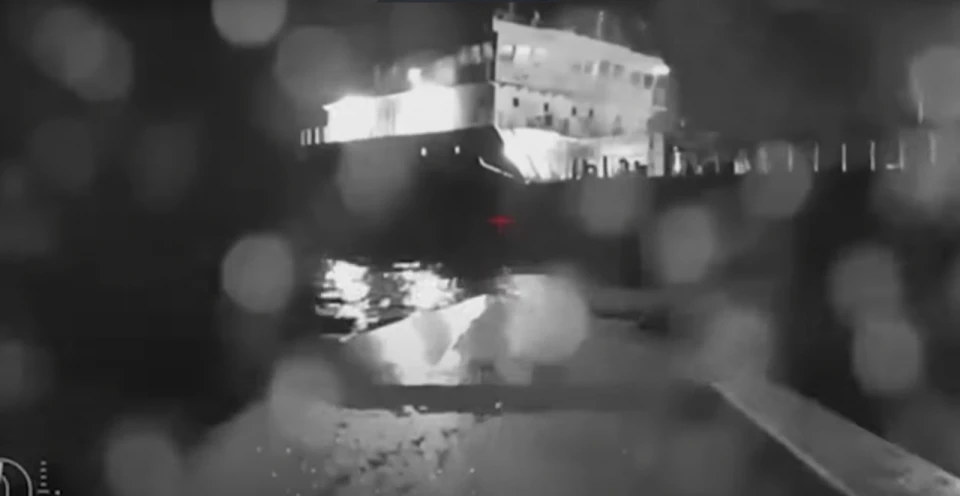
A naval drone of the Defense Forces attacks the Russian tanker SIG,
Photo: screenshot
The establishment of a military base on the left bank of the Kherson region stands out as a significant achievement, primarily serving tactical purposes today. According to Serhiy Zgurets, "The Defense Forces' key objective now is to disrupt the enemy's actions, compelling them to withdraw reserves, thereby weakening their efforts in other areas." In essence, large-scale operations on the Left Bank of the Kherson region are not currently in focus.
Among the accomplishments of the Armed Forces, noteworthy progress has been made in the south of Bakhmut, where the 3rd Separate Assault Brigade successfully liberated villages like Andriivka and Klishchiivka. However, the enemy has shifted to an offensive stance in this area, exerting significant pressure north of the city. Presumably, their aim is to breach the tactical depth of the Ukrainian troops' defense toward Chasiv Yar, posing a substantial threat to the Ukrainian group south of Bakhmut, particularly in Klishchiivka. Military observer Kostyantyn Mashovets, coordinator of the "Information Resistance" monitoring group, acknowledges challenges, noting that the plan to bypass Bakhmut from the south is facing obstacles. Therefore, it is premature to draw conclusive results from the Bakhmut operation.
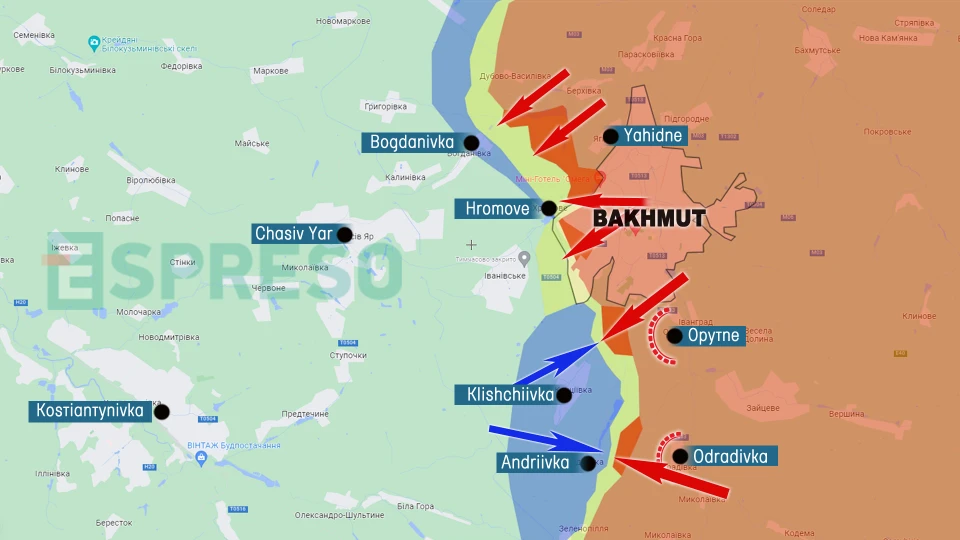
Photo: Espreso
What’s next
According to Zaluzhnyi, a new phase has started in the Russian-Ukrainian conflict. The time when the Armed Forces held the advantage across most of the front is now history. Presently, Russian forces are making progress in various directions, and the Armed Forces' goal is to hinder their advance.
During his evening addresses, Zelenskyy is shifting the focus away from a counteroffensive, emphasizing the urgency of swiftly constructing fortifications and laying mines on territories.
"Our nation will certainly have ample mines and concrete," stated the president.
In a BBC interview, former Armed Forces head Viktor Muzhenko highlighted the necessity of adopting a "strategically active defense," involving the task of counterattacks. He stressed the immediate need for the Armed Forces to establish well-trained and highly motivated reserves. "If a commander lacks reserves, even if not defeated yet, the conditions are already set for potential loss," emphasized the general.
Serhiy Zgurets acknowledges that the Armed Forces will likely spend the first half of 2024 on the defensive. He predicts a slower supply of weapons and ammo compared to 2023. Western allies might match Russia's arsenal, thanks to contributions from North Korea, by the end of 2024. Zgurets emphasizes that destroying enemy personnel and equipment remains effective in defense.
Currently, adopting an active defense stance proves to be the most advantageous strategy for the Armed Forces. This approach considers the potential increase in mobilization in Russia following the presidential elections in March 2024. Zgurets suggests that escalating Russian losses will convey to the enemy that, regardless of their mobilization efforts, the Ukrainian army will prevail against these forces.
- News







